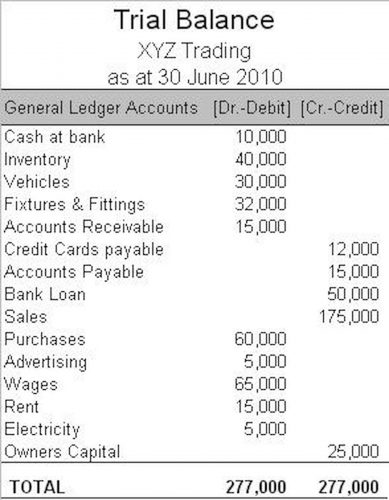What Is a Pro Forma Invoice? Required Information and Example
There are several different uses for these types of invoices, and they have proven types of government budget to be incredibly helpful for organizations, businesses, and individuals in various industries. As we said, pro forma invoices can be created and used by anyone, but most commonly, they’re used in trade transactions and imports and exports. This new pro forma invoice featured a delivery date of March 1st along with a $1 price increase for each ordered item to cover the expedite.
International shipping
Close crucial deals, improve cash flow, and get paid faster with FreshBooks. This is where a proforma invoice and a more conventional quote or estimate differ. Quotes are a great way to put an initial number on your transaction, which informs your client.
- Proforma invoices must also clearly include a “Proforma” label, so as not to get confused with other sales documents.
- The big difference between a proforma invoice and a standard commercial invoice is that it is preliminary or provisional.
- Wise offers a multi-currency business account, allowing you to get paid in different currencies.
- Simply fill in the customer’s details, select a payment method, and generate a proforma invoice ready to send.
- The non-binding nature of a proforma invoice means that the terms and conditions, including prices, can still be changed.
Invoiced: Streamline sending and receiving pro forma invoices
A final sales invoice (also called a commercial invoice, final invoice, or official invoice) is a business instrument that states the total amount due and requests payment. A proforma invoice is a declaration by the seller to provide products or services in the future and isn’t a legally binding agreement. Overall, proforma invoices and final invoices are both important documents when it comes to conducting business. Proforma invoices provide a preliminary agreement between two parties before exchanging goods or services. In contrast, final invoices serve as proof of sale after exchanging goods or services. Businesses can reduce potential disputes and increase overall customer satisfaction by including all the relevant information and ensuring that both parties are aware of the details.
What are the advantages of pro forma invoices?
Admittedly, for high-trust transactions, you can more than likely get away with paying for these orders using just a pro forma invoice, but in doing so, you leave yourself open to more risk. It’s always more difficult to have funds returned to your business after overpaying than just to pay the appropriate total in the first place. Further, without official documentation, you’ll fall victim to invoice fraud. Unlike an invoice that has a predefined set of fields to be included, a proforma invoice could contain anything that’s relevant at the time of creating it.
In the other states, the program is sponsored by Community Federal Savings Bank, to which we’re a service provider. Discover what an LLC invoice is for and how to create one in this clear guide. Wise offers a multi-currency business account, allowing you to get paid in different currencies. You can also transfer and convert your money when it suits you, all in one place, at the real mid-market rate.
How do I create a proforma invoice?
This helps ensure that all the necessary information is included in the invoice and that both parties have access. With these benefits, proforma invoices are an important part of doing business in today’s world. Pro forma invoices aren’t legally required but they’re generally a good idea because they can prevent disputes at the time of delivery. Pro forma invoices often come into play with international transactions, especially for customs purposes relating to duties on imports.
This could include any shipments from international suppliers, in the UK or Europe for example, into the US.
Below, we’ve provided a sample proforma invoice for a taxi driver created with SumUp Invoices. It’s customised to suit their work and includes all of the mandatory proforma information. There are two main reasons why your business would need to create a proforma invoice in advance of the actual sale. Either you want to declare an estimate of the final cost of the item(s) or service(s) you’re providing, or you want to ship internationally. In most cases, a proforma invoice is issued after the customer has committed to the purchase, but the final details of the sale are yet to be confirmed (e.g. quantity).
That gives the customer as precise an estimate as possible of the expected cost of an order. Pro forma documents describe the anticipated details of an impending sale and are delivered to buyers before product or service delivery — and sometimes even before manufacturing. As such, these invoices can remove the element of surprise from your sales efforts and help your business avoid stress. Here’s what you need to know about pro forma invoices and what they mean for your business. A proforma invoice is a preliminary invoice that is sent to a buyer before a sale is confirmed.
Discover how to accept payments online without a merchant account in this step-by-step guide for your business. This article will cover what a proforma invoice is, plus when and how to use one. Jason Ding is a seasoned accountant with over 15 years of progressive experience in senior finance and accounting across multiple industries. Jason’s firm, Notion CPA, is an accounting firm with a business-first focus.
A Proforma invoice also acts as a contractual agreement between buyers and sellers, allowing them to agree on terms of payment and delivery before completing the sale. A pro forma invoice is a preliminary document that outlines the terms of sale when an order is placed. Although it is not final, a pro forma invoice should give the buyer a clear understanding of the terms of sale, including the price, date of delivery, and any additional fees.
If a final invoice is not available, the seller can provide a proforma invoice for customs use. Most business owners and managers understand how challenging it is to balance invoices, estimates, proposals, and more. While the benefits of using proforma invoices are undeniable, it might seem overwhelming to manage the delivery and filing of yet another type of document.
It is less official than a formal/final invoice, which is typically issued at the time of delivery. They include an estimate of any commissions or fees such as applicable taxes and shipping costs. Even when advanced payment is required before service or product delivery, you should still request an official sales invoice. Proforma Invoice is often sent before an invoice is issued to provide the buyer with an estimated cost for goods and services. Proforma invoices are also used to secure payment from buyers before goods are shipped. Proforma invoices are not legally binding documents but provide an agreement between the seller and buyer on how the transaction will be carried out.
Although a proforma invoice is an important document, it should not be confused with a final invoice. A final invoice is sent after the payment for goods or services, and all sales are finalized. This document can include additional information, such as how much was paid top excel inventory templates when payment was made and any discounts or credits applied. It should also include detailed instructions on making payments and what documentation will be required for deliveries if necessary. The prices of the goods and services should be included in the proforma invoice to ensure that both parties are aware of what they will be paying or receiving. The description of the goods or services that are being purchased should be included in the proforma invoice to ensure both parties are aware of what is being sold.
On the surface, proforma invoices and sales quotes have a lot in common. They’re both used largely in the same way, both provide information about a sale and neither are legal documents in their own right. The taxes should also be included in the proforma invoice to ensure that both parties are aware of what is being paid or what is owed. This section should include information such as what taxes have been applied, what percentage of each tax will be charged, and the total amount due. The invoice expiration date should be included in the proforma invoice to ensure both parties know when payments must be received.









